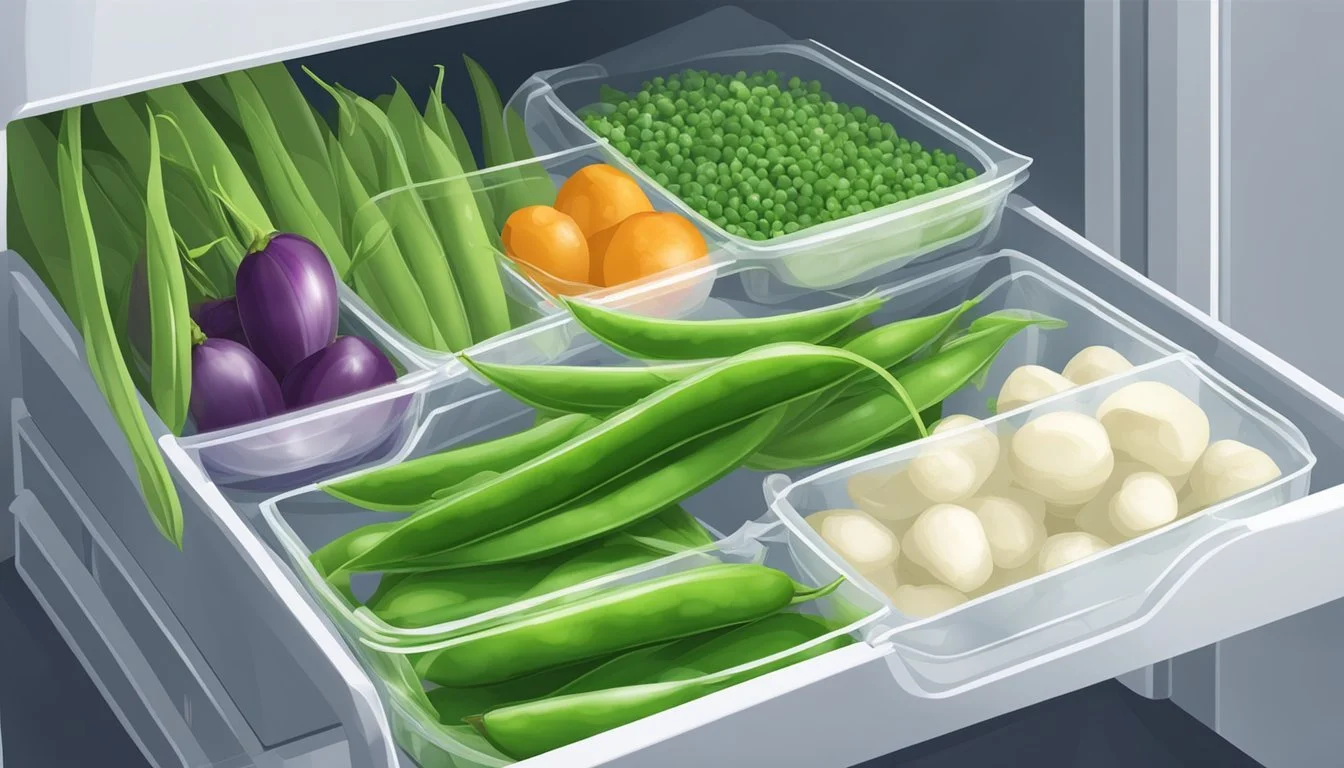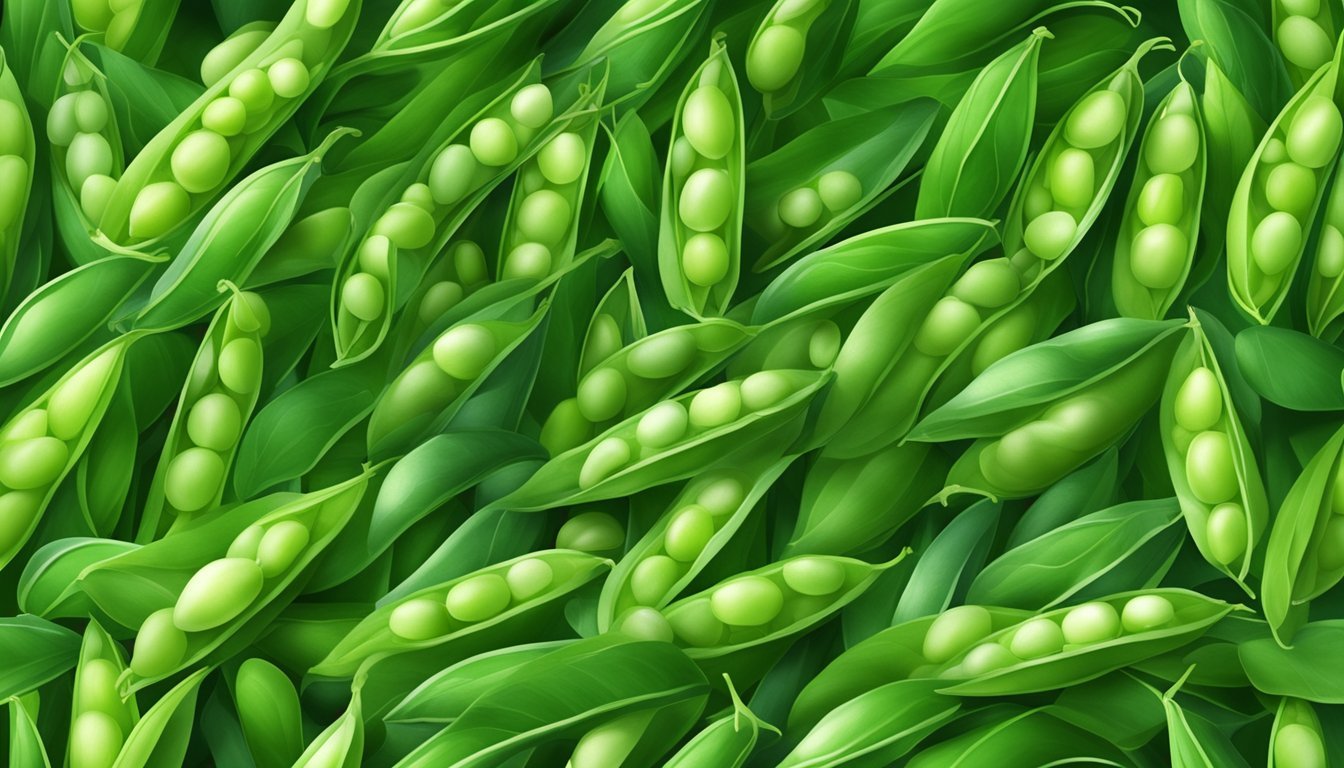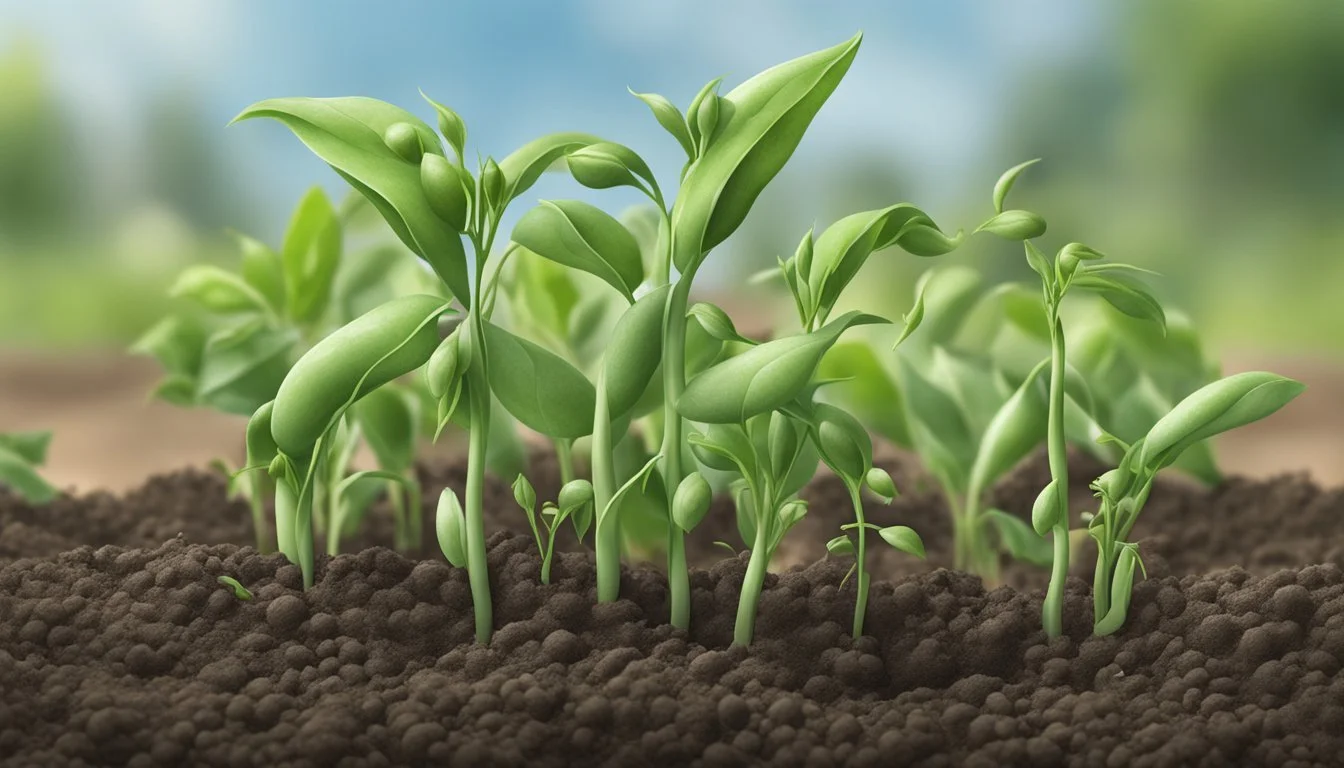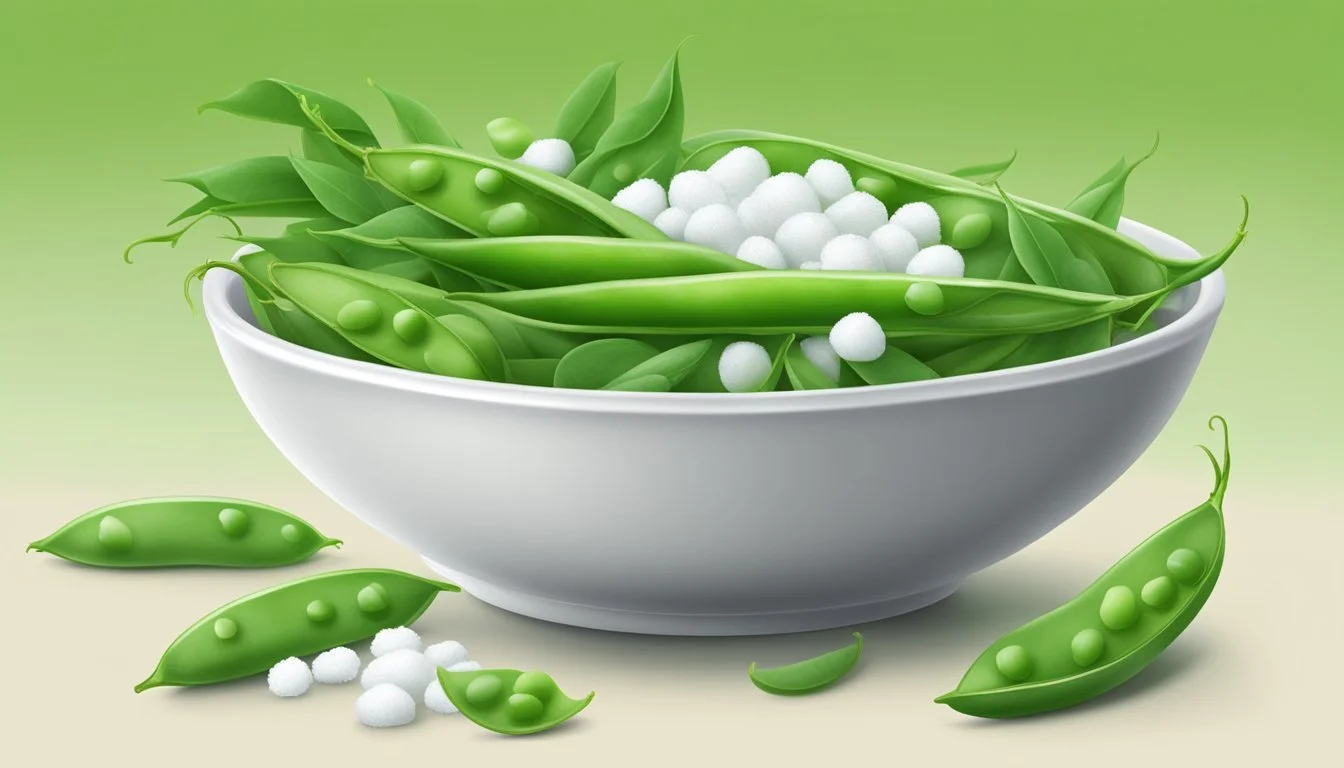How Long Do Snow Peas Last?
Shelf Life and Storage Tips
Snow peas are a crunchy and sweet addition to any meal, whether eaten raw in salads or cooked in stir-fries. When stored properly, fresh snow peas last in the refrigerator for about 3 to 4 days. It is important to store them in a plastic bag and to refrain from washing them until they are ready to be used, to prevent premature spoilage.
For longer preservation, snow peas can be frozen, extending their shelf life up to a year. The freezing process starts with blanching, which is essential to maintaining their texture and flavor. Once blanched, they can be placed in airtight containers or sealed bags before being stored in the freezer. This method is effective for both raw and cooked snow peas, though the latter should also be cooled and placed in airtight containers before freezing.
Overview of Snow Peas
Snow peas are a popular vegetable known for their edible pods and sweet flavor. They are an essential ingredient in many cuisines, offering nutritional benefits and culinary versatility.
Varieties of Snow Peas
Oregon Sugar Pod and Oregon Sugar Pod II are well-known cultivars of snow peas. These varieties are characterized by their large, sweet pods which are typically eaten whole, without shelling. The Mammoth Melting variety is another popular type that is prized for its size and flavor, often preferred for culinary purposes.
In contrast to snow peas, sugar snap peas and snap peas are similar but are known for their rounder pods and the tendency to be eaten when the peas inside have developed more fully.
The growth of snow peas, typically enjoyed for their flat, tender pods and tiny seeds, differentiates them from other pea varieties which may require shelling before consumption. The delicate nature of their growth and their preference for cooler weather conditions makes snow peas an ideal candidate for early planting in the garden cycle.
Sowing and Growing
Sowing snow peas at the appropriate time and maintaining optimal growing conditions ensures a successful harvest. Careful attention to soil quality, watering practices, and pest management can promote robust growth.
Optimal Planting Conditions
Snow peas thrive in cooler temperatures and it is best to plant them in the garden 4 to 6 weeks before the last frost. They can germinate in soil temperatures as low as 40°F. For ideal growth, aim to sow when the soil temperature is between 45°F and 75°F. Plant seeds 1 to 1.5 inches deep and 1 inch apart, in rows that are about 18 to 24 inches apart.
Sunlight and Soil Requirements
These peas prefer full sun to partial shade and require at least 6 hours of sunlight daily. They grow best in well-draining soil with a pH level between 6.0 and 7.5. Prior to planting, amend the soil with compost or aged manure to increase fertility; snow peas fix nitrogen in the soil but welcome the boost.
Watering and Maintenance
After sowing, water the seeds thoroughly yet gently to settle them into soil without causing erosion. Maintain even moisture but avoid waterlogging to prevent root rot. Once flowers appear, reduce watering. Support growing vines with a trellis to keep pea plants off the ground and promote air circulation.
Common Pests and Diseases
Snow peas are susceptible to pests like aphids and diseases such as powdery mildew. Regular checks for these problems and appropriate interventions can prevent damage. It's recommended to mulch around plants to maintain soil moisture and temperature as well as to control weeds, which can harbor pests.
Harvesting and Storage
Snow peas achieve peak freshness when harvested and stored correctly. Optimal harvesting times, proper techniques, and appropriate storage methods are crucial for maintaining their sweet flavor and crisp texture.
Identifying Harvest Time
To ensure the best quality, snow peas should be harvested when the pods are bright green, swollen with petite seeds, but before they become bulky and overly mature. Typically, this stage occurs when the pods are about 2 to 3 inches long and still flat.
Proper Harvest Techniques
Harvesting should be done carefully to avoid damaging the pea plants. Use a clean, sharp instrument to cut the pod from the vine or gently pull it straight down. Harvest early in the day when the sugar content is highest for the sweetest peas suitable for salads.
Post-Harvest Handling
After harvest, handle snow peas with care to prevent bruising. Snow peas are best used immediately after picking for salads or eaten raw for the freshest taste. If they cannot be used right away, cool them down quickly to retain crispness.
Storing Snow Peas
Fresh snow peas can last up to five days if stored properly. Keep them in the refrigerator in a plastic bag that allows for airflow, or better, in an airtight container lined with a paper towel to absorb excess moisture.
In the Fridge: Place snow peas in a perforated plastic bag and store them in the crisper drawer.
Freezing: For longer storage, snow peas can be blanched for 1-2 minutes, plunged into ice water, drained, and then placed in a freezer-safe airtight container or bag. They can be stored in the freezer for up to 8 months.
Maximizing Shelf Life
To ensure that snow peas retain their quality and freshness for as long as possible, it's important to adhere to the best refrigeration practices and freezing techniques. Proper storage not only prolongs their shelf life but also maintains their crispness and flavor.
Refrigeration Practices
In the fridge, fresh snow peas should be stored immediately after purchase. They thrive best when kept in a plastic bag to retain moisture without becoming too damp, as excessive moisture can lead to premature spoilage. It's crucial to:
Not wash the snow peas before storing as the additional water can promote mold growth.
Place them in the coldest part of the refrigerator, usually the bottom shelf, which can extend their refrigerated shelf life.
Use them within 3 to 4 days to enjoy their best texture and taste.
Freezing Techniques
Freezing snow peas can significantly extend their shelf life while preserving their nutrients:
Wash the peas thoroughly to remove any dirt.
Blanch the snow peas in boiling water for 1-2 minutes and then quickly immerse them in ice water. This stops the cooking process and maintains their vibrant color.
After cooling, pat dry the snow peas to remove excess water to prevent ice crystals and frost from forming.
Place the snow peas in freezer bags or an airtight container. Expel as much air as possible to protect against freezer burn.
Label the container with the date of freezing.
Stored properly, snow peas can last in the freezer for 8-12 months. When ready to use, they can be cooked directly from frozen, without the need to thaw, keeping their snap and preventing them from turning moist and bad.
Signs of Spoilage
When assessing the quality of snow peas, one must be attentive to certain spoilage signs. These indicators will ensure that they can be identified before the snow peas become inedible.
Visual Indicators
Snow peas may exhibit several visual signs when they start to spoil. Key indicators include:
Discoloration: They may turn from their vibrant green to a yellowish or gray hue indicating they are past their prime.
Mold: If there is any fuzzy growth or spores on the surface, the snow peas are no longer safe to consume.
Texture and Odor
The texture and odor of snow peas are other crucial aspects to consider:
Texture: Fresh snow peas are firm to the touch. When they become limp, wrinkle, or slimy, they should not be consumed.
Odor: Any off-putting or sour smell is a clear sign that the snow peas have gone bad and should be composted. Fresh snow peas should have a subtle, earthy scent; any deviation from this could indicate rot.
Preparing Snow Peas for Consumption
Proper preparation of snow peas enhances their sweet, crunchy taste and is essential for both raw and cooked applications, from salads to stir-fries. Careful cleaning and prepping can maximize their shelf life and culinary potential.
Cleaning and Prepping
Before snow peas are used in any dish, they should be thoroughly cleaned to remove any dirt or residue. A colander is useful for this task:
Wash: Place the snow peas in a colander and rinse under cold running water. Alternatively, immerse the colander in a bowl of water and swirl to dislodge any debris.
Once washed, snow peas often require some trimming:
Cut: Trim off the stem end of each snow pea with a knife or scissors. If there's a tough string running along the seam, it should be removed by snapping the stem end and pulling the string away.
Cooking and Usage Ideas
Snow peas are versatile and can be included in a multitude of dishes. Here are some ways to incorporate them into meals:
Raw: Snow peas can be sliced thinly and added to salads for a sweet and crunchy component.
Stir-fries: Add whole or sliced snow peas in the last few minutes of cooking to retain their vibrant color and crisp texture.
For those looking to preserve the peas or use them as a standalone side dish:
Blanch: Immerse snow peas in boiling water for 30 to 45 seconds, then transfer to a bowl of ice water to halt the cooking process. This method is great for salads or to prepare snow peas for freezing.
Soups: Snow peas can be chopped and added to soups, providing a delicate sweetness and pleasing crunch.
These simple yet effective preparation methods ensure that snow peas contribute their maximum flavor and texture to any dish.
Health Benefits and Nutritional Information
Snow peas are a fresh, crunchy vegetable commonly included in salads and stir-fries. They are known for their edible pods and slightly sweet taste. As a nutritious legume, snow peas offer several health benefits due to their rich nutritional content.
Nutritional Values of Snow Peas (per 100g):
Calories: 42 kcal
Protein: 2.8 g
Fat: 0.2 g
Carbohydrates: 7.55 g
Fiber: 2.6 g
Vitamin C: 60 mg
Health Benefits:
Dietary Fiber: The significant fiber content in snow peas promotes smooth bowel movements, potentially reducing the chances of constipation.
Vitamin C: A powerful antioxidant, vital for maintaining healthy skin and immune function, snow peas contain a substantial amount of Vitamin C, meeting 100% of the daily value based on a 2,000 calorie diet.
Low-Fat Content: With almost negligible fat content, these peas are suitable for weight management plans.
Snow peas are also a versatile ingredient that can be enjoyed raw or cooked, making them an easy addition to a variety of dishes, from salads to hot meals. Their nutritional characteristics make them a valuable component of a balanced diet, contributing to overall health and well-being.
Fun Facts and Tips
Snow peas, with their crisp texture and sweet flavor, are not just a nutritious addition to meals, but they also boast a rich cultural presence and are a joy to grow in a variety of gardens.
Cultural Importance
In many Asian cuisines, snow peas are a staple ingredient known for their versatility and ability to absorb flavors. They are celebrated not only for their culinary uses but often feature in festivals and community events that mark the beginning of the harvest season in some cultures.
Gardening Tips for Beginners
Beginners should note that snow peas thrive in full sun and require well-draining soil. To start, one should plant seeds 1 inch deep in rows approximately 12 to 36 inches apart. These peas benefit from a trellis to support their vines. For optimal growth, the temperature should be cool as snow peas flourish in spring and fall. Gardeners must ensure to keep the soil moist and use an inoculant to help with nitrogen fixation, beneficial for pod development.
Planting Time: Plant 4-6 weeks before last frost.
Spacing: Seeds should be 1 inch apart within rows.
Watering: Keep soil evenly moist but not waterlogged.
Selecting the Best Varieties for Your Region
Choosing the right variety of snow peas can make a significant difference in a garden's success. Oregon Sugar Pod and Oregon Sugar Pod II are popular because of their resistance to diseases like powdery mildew. They are excellent for cooler regions. When selecting varieties, consider local climate conditions and disease resistance. Gardeners in warmer regions should look for heat-tolerant varieties.
Popular Varieties:
'Oregon Sugar Pod': Mildew resistant, suitable for colder climates.
'Mammoth Melting': Known for its long, sweet pods.
Both children and adults find growing snow peas rewarding due to their fast growth and the fun of harvesting both peas and tender tendrils. These factors, combined with the plant's need for moderate maintenance, make snow peas an excellent choice for novice gardeners.
Frequently Asked Questions
How long do snow peas last when stored fresh?
Fresh snow peas typically last for 3 to 4 days in the refrigerator. They should be stored in a plastic bag and not washed until ready to use to maximize shelf life.
What is the best way to store snow peas in the refrigerator?
To store snow peas in the refrigerator, one should place them in an airtight container or plastic bag, ensuring they are completely dry to avoid moisture build-up, which can lead to rot.
Can snow peas be frozen for long-term storage?
Yes, snow peas can be frozen and will maintain quality for up to 1 year. Prior to freezing, they should be blanched for 1-2 minutes, dried thoroughly, and then placed in a freezer-safe, airtight container.
Do snow peas require any preparation before freezing?
They should be washed, stems removed, and blanched in boiling water to deactivate enzymes that can cause deterioration. After blanching, snow peas must be dried before freezing.
What factors can cause snow peas to spoil faster?
Excess moisture and lack of air circulation can cause snow peas to spoil more quickly. Checking for these factors and maintaining optimal storage conditions can prevent premature spoilage.
When harvesting snow peas for storage, what should be considered?
Snow peas should be harvested while they are tender and crisp for the best texture and flavor. They should be used or stored properly soon after harvesting to preserve their freshness.










